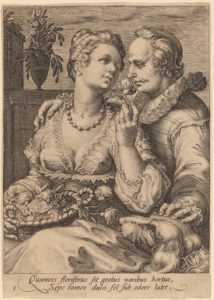
That candle. I cannot think of anything I would less like to write about than ‘that candle’. Was it irony? Humour? Some sort of feminism? A clever marketing ploy? It is obvious that Gwyneth Paltrow is a whiz at self-promotion. So why would I add to the mountain of publicity that she has generated?
And then the proof for a new book arrives on my desk fresh from the publishers. “Smells: A cultural history of Odours in Early Modern Times” by the historian Robert Muchembled is due out in May — and I can’t help but read it in the light of the whole Paltrow brouhaha.
And now that I have started writing, I realise I cannot go much further without being more explicit. Paltrow’s candle looks like one of those fancy perfume candles you get your Granny at Christmas, the tasteful kind of thing you might get at the White Company. Except the words on the side read: “This smells like my vagina.”
Where does my reluctance to quote this come from? Muchembled offers a history of this squeamishness as rooted in early modern period. He tells us that “the unpleasant smell of women haunted the collective cultural imagination of the sixteenth and seventeenth centuries.” As elsewhere in this period, the Church didn’t cover itself in glory, associating human odour, especially the odour of our ‘lower parts’ with the devil’s breath.
But it wasn’t just the church. Artists of that period often depicted lovers, with a dog’s nose nuzzling onto the woman’s lap and a bunch of flowers on her knees to hide the smell.
There are many who have seen Paltrow’s candle as an important part of the resistance to the repressive politics of shame. Others see it as cashing in on something private and intimate. Whatever your take on this, the history of our relationship with smell seems like an extraordinarily effective way to chart our changing moral understanding of the world. And that is unsurprising because there may be no better sense to reference the sheer physicality of our condition.








Join the discussion
Join like minded readers that support our journalism by becoming a paid subscriber
To join the discussion in the comments, become a paid subscriber.
Join like minded readers that support our journalism, read unlimited articles and enjoy other subscriber-only benefits.
Subscribe